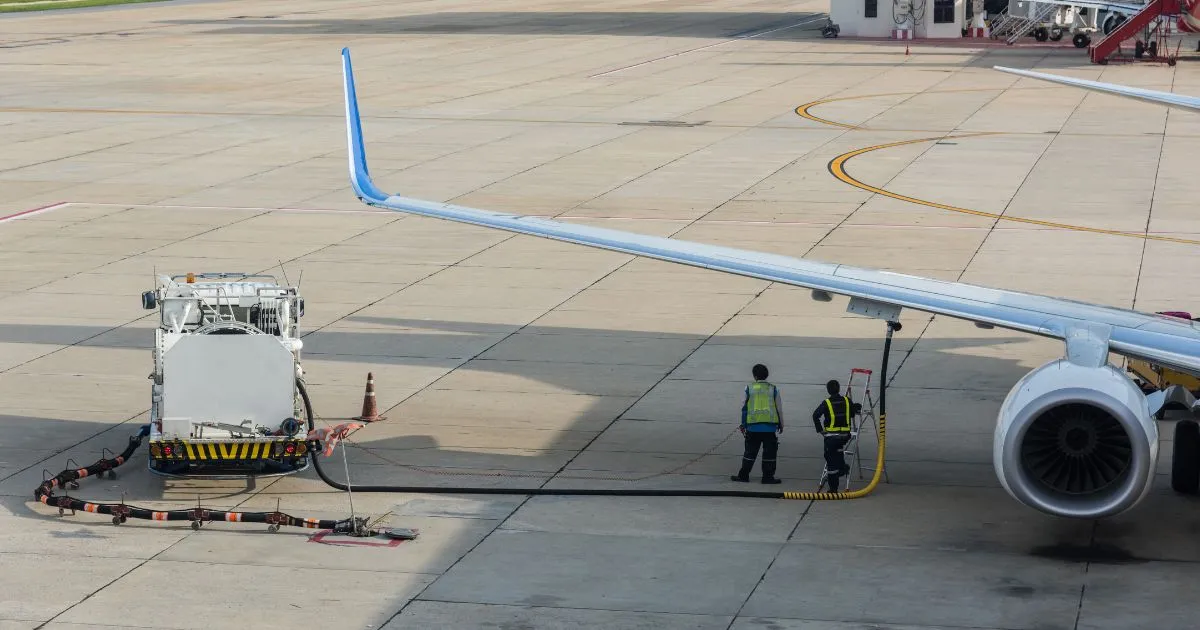Aviation Fuel industry grapples with the need to reduce carbon emissions, Sustainable Aviation Fuel (SAF) has emerged as a key solution. SAF is a renewable fuel derived from various biological feedstocks, offering a promising alternative to traditional jet fuels. With growing investments and advancements in technology, SAF is rapidly evolving. This post explores the latest developments in sustainable Aviation Fuel, highlighting new technologies, production methods, and industry trends that are shaping the future of greener air travel.
Technological Advances in Aviation Fuel
New Feedstock Innovations
- Algae-Based Fuels: Researchers are making significant progress with algae-based SAF. Algae can produce high oil yields and grow in environments unsuitable for traditional crops. Recent developments aim to improve the efficiency and scalability of algae-based biofuels, making them a viable option for commercial aviation.
- Waste and Residue Utilization: Companies are increasingly turning to waste materials such as used cooking oil, municipal solid waste, and agricultural residues to produce SAF. Advanced technologies are enhancing the conversion processes to produce high-quality fuel from these feedstocks.
Advanced Catalysis and Processing Techniques
- Hydroprocessed Esters and Fatty Acids (HEFA): The HEFA process remains one of the most widely used methods for SAF production. Recent improvements focus on increasing the efficiency and yield of the HEFA process, making it more cost-effective and scalable.
- Alcohol-to-Jet (ATJ) Technology: ATJ technology involves converting alcohols such as ethanol or butanol into jet fuel. Innovations in ATJ processes are enhancing the fuel’s performance and reducing production costs, making it a competitive SAF option.

Scale-Up and Commercialization Efforts
Major Airline and Industry Partnerships
- Airline Commitments: Leading airlines, including United Airlines, KLM, and Lufthansa, have committed to using SAF in their fleets. These commitments are driving demand and encouraging investment in SAF production facilities.
- Industry Collaborations: Collaborations between airlines, fuel producers, and technology providers are accelerating the development and scaling of SAF. Notable partnerships include the collaboration between Airbus and SAF producers to integrate SAF into commercial operations.
SAF Production Facilities
- New Plants and Expansion: Several new SAF production facilities are under development or have recently started operations. For example, the World Energy Biogas Refinery in California and the Neste Singapore refinery are significant milestones in scaling up SAF production.
- Government Support: Governments worldwide are providing support through subsidies, tax incentives, and funding for SAF research and infrastructure development. This support is crucial for overcoming the financial and technical barriers to large-scale SAF production.
Environmental and Economic Impact
Emission Reductions
- Carbon Footprint: SAF can reduce carbon emissions by up to 80% compared to conventional jet fuel. Recent studies highlight the positive impact of SAF on reducing the aviation sector’s carbon footprint and contributing to climate goals.
- Lifecycle Analysis: Ongoing research is refining lifecycle analyses of SAF to better understand their environmental impact. These analyses include considerations of feedstock production, fuel processing, and end-use emissions.
Cost Trends
- Price Parity with Conventional Fuels: SAF production costs have historically been higher than conventional jet fuels. However, recent advancements are moving towards cost parity. Economies of scale, technological improvements, and increased competition are expected to drive down SAF prices over time.
- Economic Incentives: Governments and organizations are exploring mechanisms such as carbon pricing and SAF blending mandates to make SAF more economically attractive. These incentives aim to bridge the cost gap and support widespread adoption.
Regulatory and Certification Developments
Safety and Certification
- Regulatory Approvals: SAF must meet stringent safety and performance standards before it can be used in commercial aviation. Recent updates in certification processes streamline approvals and facilitate the integration of new SAF technologies.
- Industry Standards: Organizations like the International Air Transport Association (IATA) and ASTM International are updating industry standards to include SAF. These standards ensure that SAF meets safety, performance, and quality requirements.
Policy and Regulatory Support
- Government Policies: Various countries are implementing policies to support SAF adoption, including blending mandates and fuel subsidies. For example, the European Union’s Green Deal and the U.S. Renewable Fuel Standard include provisions for SAF.
- Global Initiatives: International organizations are promoting SAF through global initiatives and agreements. The Carbon Offsetting and Reduction Scheme for International Aviation (CORSIA) aims to offset carbon emissions from international flights, including SAF usage.
Future Outlook
Technological Innovations
- Next-Generation SAF: Research is ongoing into next-generation SAF technologies, including synthetic fuels produced from renewable electricity (Power-to-Liquid). These technologies promise even greater reductions in emissions and broader feedstock options.
- Integration with Other Green Technologies: SAF is likely to be part of a broader strategy that includes electric and hybrid-electric aircraft, advanced air traffic management, and airport sustainability initiatives.
Market Growth and Adoption
- Increased SAF Adoption: As production scales up and costs decrease, SAF is expected to become more widely adopted. Airlines are likely to increase their SAF usage, driven by regulatory requirements and corporate sustainability goals.
- Global Expansion: SAF production and usage will expand globally, with more countries developing SAF infrastructure and supporting policies. This expansion will contribute to a more sustainable global aviation industry.
The Future of Sustainable Aviation Fuel
The latest developments in sustainable Aviation Fuel (SAF) highlight a promising future for greener air travel. Advances in feedstock technologies, processing techniques, and commercialization efforts are driving the growth of SAF. While challenges remain, including cost and infrastructure development, ongoing research, and industry collaborations are paving the way for a more sustainable aviation sector.
As SAF technology continues to evolve, Aviation Fuel will play a crucial role in reducing the environmental impact of air travel and helping the aviation industry achieve its sustainability goals. Stay tuned for further advancements and embrace the shift towards greener skies!